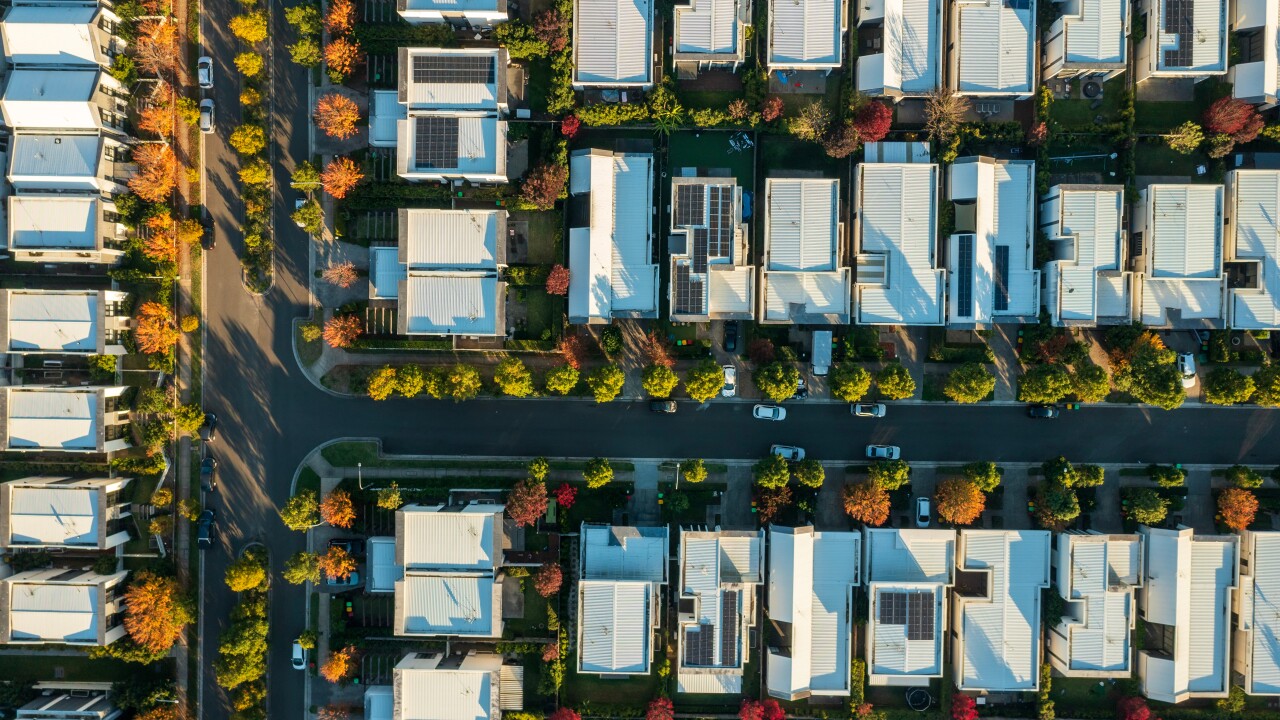Editor's note: This story has been updated to include guidance released late Thursday by the SBA.
Bankers are raising concerns about the emergency loan program for businesses hurt by the coronavirus outbreak, saying on the eve of its launch that parts of the program are unclear and onerous.
The Paycheck Protection Program, run by the Small Business Administration and the Treasury Department,
Lenders are especially worried about several of the program's restrictions, including a low rate cap on the loans and a two-year amortization schedule that will likely increase a borrower’s payments.
Other concerns include uncertainty over the conditions for loan forgiveness, banks' ability to sell loans in the secondary market and the need for guidance on what lenders must do to lock in a full SBA guarantee, industry experts said.
While many banks may decide they are obliged to participate to maintain customer relationships and avoid defaults on existing loans, their level of engagement may be tempered if the long list of issues goes unresolved.
Indeed, JPMorgan Chase, the largest U.S. bank, emailed customers late Thursday that it most likely will not start accepting applications Friday as it had initially hoped,

“The guidelines have to be clear” to ensure success, Jill Castilla, CEO of Citizens Bank of Edmond in Oklahoma,
Chris Hurn, CEO of Fountainhead Commercial Capital, a nonbank SBA lender in Lake Mary, Fla., was even more pointed.
“If they don’t get this fixed, they can launch the program tomorrow and have all the publicity — it won’t matter because this will be dead on arrival,” Hurn said. “It will be a spectacular failure."
The SBA, late Thursday, set a 1% rate as part of its interim final rule for the program, an increase from initial guidance of 0.5%. It also added language to hold lenders harmless if a borrower commits fraud or fails to comply with the program's criteria. While banks are required to follow Bank Secrecy Act requirements, they will not need to re-verify existing customers.
Calls to the SBA and the Treasury were not immediately returned.
The PPP will provide borrowers with up to $10 million to use to pay employees and other basic operational expenses. Borrowers using the funds for those purposes can have up to 100% of the loans converted into grants and forgiven.
While bankers want to participate, current terms and conditions make the program “unworkable” for many of them, said Peter Gwaltney, president and CEO of the North Carolina Bankers Association.
“It’s asking a lot of banks to take on unmanageable and immeasurable risk,” Gwaltney said. “The delivery channel is shrinking by the day. We don’t know what to expect tomorrow.”
Bankers had prepared for rates as high as 4% and a possible 10-year amortization schedule, which were permitted by the stimulus package. But the SBA and Treasury opted to set terms and pricing well below what they were authorized to do.
“This is the biggest opportunity to serve the needs of our local business community … and it’s the biggest frustration I’ve ever had,” said Dan Yates, CEO of the $125 million-asset Endeavor Bank in San Diego.
In comparison, loans guaranteed under the SBA’s flagship 7(a) program before the coronavirus crisis were priced at the prime rate plus 2.75%.
“The 4% rate envisioned in the CARES Act is reasonable,” the Independent Community Bankers of America wrote in a letter to Trump administration officials after the rate was originally set at 0.5%. “It would not make these loans profitable for lenders; we recognize that’s not the purpose of the program.”
A low rate “would create unacceptable losses for lenders, which have a duty to preserve their financial strength for the sake of their communities,” the letter said.
Not all bankers are upset with a short amortization schedule.
Jim Hughes, CEO of the $1.7 billion-asset Unity Bank in Clinton, N.J., said he would rather hold the lower-yielding assets for a shorter period of time.
Sen. Marco Rubio, R-Fla., one of the architects of the PPP, suggested on Tuesday that banks will have a limited and straightforward role. They do not have to underwrite the loans, he said, and could instead verify the existence of the small-business borrower and its payroll.
“Banks should be able to start right away,” Rubio said during a webinar for small-business owners co-sponsored by the Florida Restaurant & Lodging Association. “Banks should be participating in this.”
Any hesitancy by banks would put more strain on the ambitious loan program. To put the size of the effort into perspective, the SBA’s traditional 7(a) program generated $141 billion in volume — or roughly 40% the size of PPP — over a six-year period that ended on Sept. 30.
Some industry observers estimate more than 4 million applications could be submitted, with many borrowers being instructed to get their paperwork completed as soon as possible.
“Any number I could provide would likely be an underestimation,” Castilla said. “The demand and need are beyond anything I’ve ever experienced.”

But there are big concerns over what the banks should do with the loans once they are originated.
While the guidance does not prevent banks from selling originations on the secondary market, few investors are expected to show interest in buying loans with a low interest rate.
A viable secondary market is critical for banks like Endeavor that lack the capacity to handle the extraordinarily high levels of pandemic-driven demand they are almost certain to see.
“Many community bank lenders that originate SBA 7(a) loans depend upon an active secondary market that purchases pools” of loans, Yates said. “A community bank’s typical deposit inflows alone are not sufficient to fill the loan demand.”
“It’s impossible for anybody but the federal government to be buying this paper” at 0.5%, Hurn said.
“The biggest concern we have right now … is that we don’t have a mechanism to recycle the paper on these funds,” Hurn said. “Treasury has signaled they intend to purchase these loans with SBA, and yet we don’t have that mechanism in place yet.”
Banks are largely reluctant to hold such low-rate loans on their books, tying up capital that could be deployed elsewhere. While the PPP includes processing fees, ranging from 1% to 5% based on a loan’s size, smaller lenders may not have a big enough balance sheet to make those worth their while.
“We’re not doing this for the fee income,” Unity’s Hughes said. “There’s no money to be made.”
While Unity plans to accept applications, the low interest rate provides very little incentive to offer loans to new customers, Hughes said.
And, based on current guidance, the loans will be risky to hold on a balance sheet, industry observers said. Though the SBA is offering up to a 100% guarantee, bankers would like clarity on what happens if borrowers file a fraudulent application or fail to meet loan conditions.
“You’ve got six-week deferrals immediately on these loans,” Hurn said. “You’ve got no personal guarantees or collateral, and most of these loans will be forgiven between four and 12 months.”
There are also concerns banks lack specific regulatory guidance on how to expedite these loans without violating anti-money-laundering or other compliance rules.
As a result, banks are likely to prioritize loans to their own customers first because of a lack of clarity on how much due diligence is required, said Joe Lynyak, a lawyer at Dorsey & Whitney. Another concern is how quickly the SBA will reimburse lenders.
"If someone gets a loan for $5 million to pay employees, they submit paperwork, and the bank has to send it to the SBA," Lynyak said. "Are they going to end up reimbursing the money quickly? Probably not."
Fraud, and uncertainty over who would shoulder the risk, is another sticking point, said Michael Zeltkevic, a managing partner at the consulting firm Oliver Wyman. The worry is that banks that approve fraudulent applications could be blamed later on.
“Anytime you start putting this volume of money through,” Zeltkevic said, “there will be some bad actors.”
The Biden administration once again extended the pause on student loan payments enacted to help borrowers during the COVID-19 pandemic, this time through the end of August.
The two states' combined plans amount to over $1.5 billion of the Homeowner Assistance Fund included within the American Rescue Plan Act , which was passed a year ago.
An uptick in pandemic-related payment suspensions reflecting new or restarted plan activity previously occurred as the omicron variant spread, but activity has since subsided.
The $300 million-asset Citizens may limit participation to current customers, along with the loan amount for each applicant, Castilla said. While the bank already has an application form on its website, she said there is no guarantee Citizens will make the loans.
“We want to get these funds out to Oklahomans as quickly as possible, but we have to feel confident that the SBA guarantee can be counted upon through the crisis,” Castilla said. “My confidence would increase greatly if there was a blanket safe harbor for banks participating in the program.”
The Federal Deposit Insurance Corp. issued a statement Thursday assuring that it would “not criticize financial institutions good-faith efforts to prudently use the SBA and Treasury programs to work with small-business borrowers affected by COVID-19.”
That may not be enough to persuade a large number of bankers to jump in.
“At this moment, banks are being asked to blindly sign up for the program,” Gwaltney said.
“The truth is, despite well-meaning congressional intent, these loans are a minefield for lenders,” said Paul Kupiec, a banking expert at the American Enterprise Institute.
“If banks rush to make thousands — if not millions — of small-business relief loans, they will put themselves at risk of facing huge government fines in the future,” Kupiec said. “Banks have seen this happen before, and you can bet they are not eager to see a repeat performance.”
Kate Berry contributed to this report.








